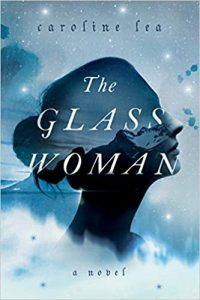Why the Past Matters: the Inspiration Behind The Glass Woman
I f it was Iceland’s breath-taking landscape that first inspired me to set a novel among its bleak, volcanic splendour, it was the country’s history, full of folklore, witchcraft and strange disappearances that enthralled me and helped develop the story of a young woman who marries for convenience and quickly finds herself isolated and in danger.
f it was Iceland’s breath-taking landscape that first inspired me to set a novel among its bleak, volcanic splendour, it was the country’s history, full of folklore, witchcraft and strange disappearances that enthralled me and helped develop the story of a young woman who marries for convenience and quickly finds herself isolated and in danger.
The idea of the wilderness of marriage had been playing on my mind for some time: my own marriage was failing and I was struck by the particular desolation that comes from finding oneself utterly isolated, while rarely being alone.
Seventeenth century Iceland was a land of isolation: there were few large communities and most people lived in tiny settlements, where, for large chunks of time, the miles of wilderness and the winter snows cut them off from the rest of humanity.
What would it have been like to be so isolated? How quickly would a young woman, finding herself alone with a man she neither knew nor trusted, begin to question her own sanity? My protagonist, Rósa, moves to a tiny isolated settlement where the people mistrust her and whisper dark secrets about her husband, Jón, and his first wife, who died earlier in the year and whom he buried in secret in the dead of night.
When researching the novel, I became fascinated by the way that, in the seventeenth century, Icelandic folklore and superstition rubbed shoulders with religion. The witch trials came to the country later and were far less catastrophic than in the rest of Europe: of the 120 trials, 22 victims were burned, and only one of these was a woman.
This was partially because of the geographical isolation of the scattered settlements, but also because of the prevailing belief that magic was simply part of everyday existence: even children knew of the Sagas, those ancient folktales, full of ghosts, curses and violence, which were widely believed to be ‘true’ tales of events that had happened to real Icelanders. I wanted to write a story where my characters were threatened by their changing society, as well as by the physical landscape.
I found proverbs from the Sagas to shape my story; these age-old sayings are still widely known and repeated today: bare is the back of the brotherless man; the nights of blood are the nights of most impatience; a tale is only half told when one person tells it. This last idea intrigued me: it’s so easy to be convinced of your own version of events and to think that your ideas are truths, rather than subjective beliefs.
This is the case even today when, despite the glut of available information and ideas, we happily form our own echo chambers, surrounding ourselves, both online and in ‘real life’ with opinions that reinforce our own beliefs: how much easier must this have been hundreds of years ago, when the only version of the truth was created by authority figures, who were often men.
In my novel, Rósa finds herself torn between what her husband instructs her to believe and what her senses tell her is the truth. And, even for the reader, the truth is a constantly shifting idea: the novel tells us both Rósa’s story and Jón’s and we have to decide what we judge to be true, even as the very idea of truth changes.
This concept of the unstable nature of facts in the novel is something that I wanted to reflect in shifting face of the natural world. The prologue of The Glass Woman starts with a small earthquake and a body emerging from under the sea ice, but ‘the land in Iceland is never still’ and, as I wrote the novel, I found that the landscape itself became a shifting, duplicitous character, a malevolent, treacherous force, within which the characters struggled to survive.
The ‘land of fire and ice’ is renowned for being explosive and dangerous and, during my research, I found countless anecdotes of instances where the land had simply ‘swallowed’ someone: I was intrigued by the idea of people living within a landscape that they believed to be actively malign, full of mysterious hulðufolk, who might easily spitefully retaliate if their territory was invaded by blundering humans.
Rósa loves and fears the land in equal measure and, while travelling on my research trip to Iceland, I was entirely captivated by the ever-shifting landscape that was both beautiful and brutal. The idea of humanity as a temporary fixture on an eternal land became part of the driving heartbeat of the novel.
With so many rich elements as inspiration, The Glass Woman was a joy to write and I’ve been struck, time and again by how a world can seem very distant in time, and yet still have so many connections to our own struggles with isolation, relationships, truth and belief.
One of the reasons I love historical fiction is that it often casts a new light on our experiences: people might change through history, but their fundamental desires and fears remain the same. Rósa’s story is a search for truth and love within an environment that threatens to take everything from her; while the rich Icelandic setting is absolutely key to the story, the tale itself, like so much historical fiction, is one that is universally relevant and, I hope, timeless.
—
Follow Caroline on Twitter @CarolineleaLea
About THE GLASS WOMAN
 Longlisted for the Historical Writers Association Debut Crown Award
Longlisted for the Historical Writers Association Debut Crown Award
In the tradition of Jane Eyre and Rebecca—The Glass Woman by Caroline Lea in which a young woman follows her new husband to his remote home on the Icelandic coast in the 1680s, where she faces dark secrets surrounding the death of his first wife amidst a foreboding landscape and the superstitions of the local villagers.
“Gripped me in a cold fist. Beautiful.” —Sara Collins, author of The Confessions of Frannie Langton
“An Icelandic Jane Eyre.” —Sunday Times, London
Rósa has always dreamed of living a simple life alongside her Mamma in their remote village in Iceland, where she prays to the Christian God aloud during the day, whispering enchantments to the old gods alone at night. But after her father dies abruptly and her Mamma becomes ill, Rósa marries herself off to a visiting trader in exchange for a dowry, despite rumors of mysterious circumstances surrounding his first wife’s death.
Rósa follows her new husband, Jón, across the treacherous countryside to his remote home near the sea. There Jón works the field during the day, expecting Rósa to maintain their house in his absence with the deference of a good Christian wife. What Rósa did not anticipate was the fierce loneliness she would feel in her new home, where Jón forbids her from interacting with the locals in the nearby settlement and barely speaks to her himself.
Seclusion from the outside world isn’t the only troubling aspect of her new life—Rósa is also forbidden from going into Jón’s attic. When Rósa begins to hear strange noises from upstairs, she turns to the local woman in an attempt to find solace. But the villager’s words are even more troubling—confirming many of the rumors about Jón’s first wife, Anna, including that he buried her body alone in the middle of the night.
Rósa’s isolation begins to play tricks on her mind: What—or who—is in the attic? What happened to Anna? Was she mad, a witch, or just a victim of Jón’s ruthless nature? And when Jón is brutally maimed in an accident a series of events are set in motion that will force Rósa to choose between obedience and defiance—with her own survival and the safety of the ones she loves hanging in the balance.
Category: On Writing































Sound fascinating.